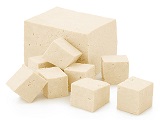
Tofu also called bean curd is a soft, relatively flavourless food product made from soybeans.
It can be silken, soft, firm, extra firm or super firm. Beyond these broad textural categories, there are many varieties of tofu.
Tofu has a subtle flavor, so it can be used in savory and sweet dishes.
It is often seasoned or marinated to suit the dish and its flavors, and due to its spongy texture it absorbs flavors well.
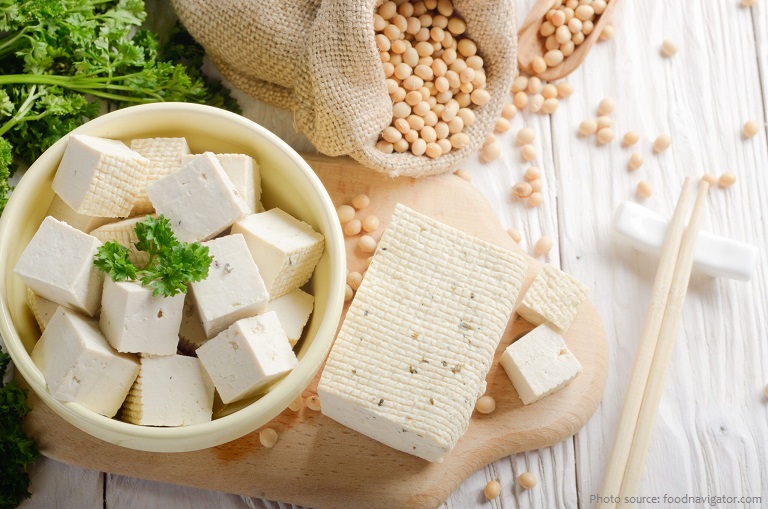
Tofu is made from dried soybeans that are soaked in water, crushed, and boiled and nigari – remains when salt is extracted from seawater. It is a mineral-rich coagulant used to help tofu solidify and keep its form. The mixture is separated into solid pulp (okara) and soy “milk.” Salt coagulants, such as calcium and magnesium chlorides and sulfates, are added to the soy milk to separate the curds from the whey.
Tofu is a good source of protein and contains all nine essential amino acids. It is also a valuable plant source of iron and calcium and the minerals manganese and phosphorous. In addition to this, it also contains magnesium, copper, zinc and vitamin B1.
An excellent food from a nutritional and health perspective, tofu is thought to provide many of the same benefits as soya beans.
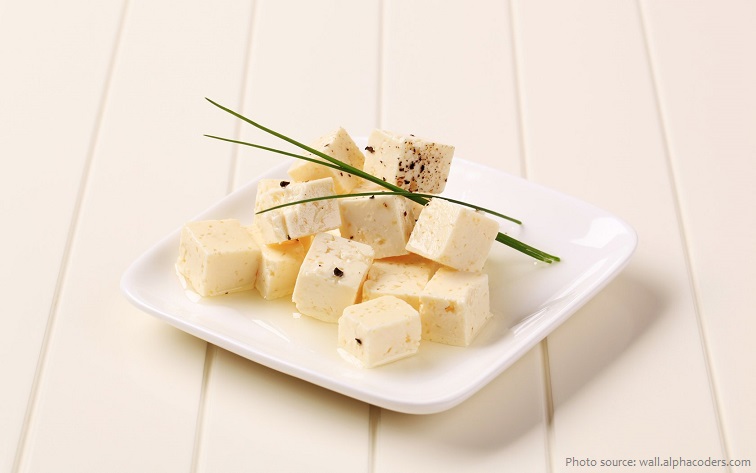
Tofu has long been the most widely used soyfood in the world. In East Asia it has much the same importance that meat, milk, and cheese have for people in Western countries. Worldwide the tofu industry is very large.
Tofu is an important source of protein in the cuisines of China, Japan, Korea, and Southeast Asia.
The English word “tofu” comes from Japanese tōfu, a borrowing of Mandarin dòufu meaning ‘bean curd, bean ferment’.
The earliest documentation of the word in English is towfu, in a 1770 letter from the English merchant James Flint to Benjamin Franklin. The term “bean curd(s)” for tofu has been used in the United States since at least 1840.

Tofu-making was first recorded during the Chinese Han dynasty about 2000 years ago. Chinese legend ascribes its invention to Prince Liu An (179–122 BC) of Anhui province. In 1960, a stone mural unearthed from an Eastern Han dynasty tomb provided support for the theory of the Han origin of tofu – however some scholars maintain that tofu during the Han dynasty was rudimentary and lacked the firmness and taste for it to be considered as tofu.
One theory suggests that the production method for tofu was discovered accidentally when a slurry of boiled, ground soybeans was mixed with impure sea salt. Such sea salt would probably have contained calcium and magnesium salts, allowing the soy mixture to curdle and produce a tofu-like gel.
Yet another legend states that tofu was invented by copying the cheesemaking methods of Mongolian tribes who lived along China’s northern border. These Mongolian tribes were known to drink milk (something quite unusual in most Asian countries!)
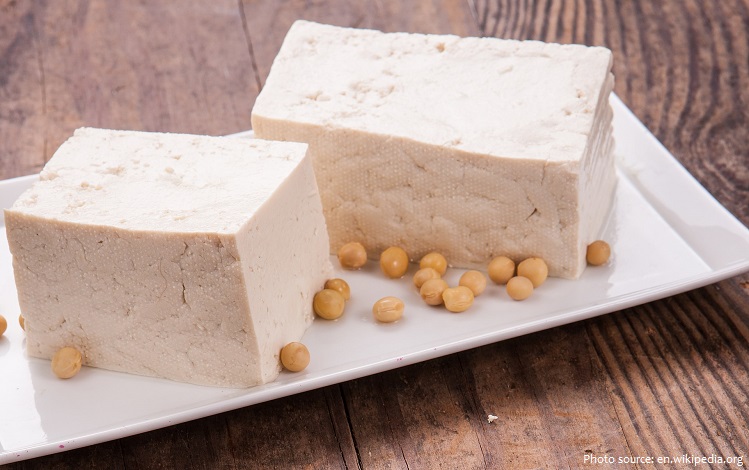
Tofu was introduced to Japan during the Nara period (late 8th century) by Zen Buddhist monks, who initially called it “Chinese curd”. A firm variation of tofu was introduced in Tosa Province, today’s Kochi Prefecture, by a Korean doctor and prisoner of war following the Japanese invasions of Korea (1592–1598). Much of tofu’s early use in East Asia was as a vegetarian substitute for meat and fish by Buddhist monks, especially those following Zen Buddhism.
The earliest Japanese document concerning tofu refers to the dish being served as an offering at the Kasuga Shrine in Nara in 1183.
The book Tofu Hyakuchin, published in 1782 of the Edo period, lists 100 recipes for cooking tofu.
Some scholars believe tofu arrived in Vietnam during the 10th and 11th centuries.
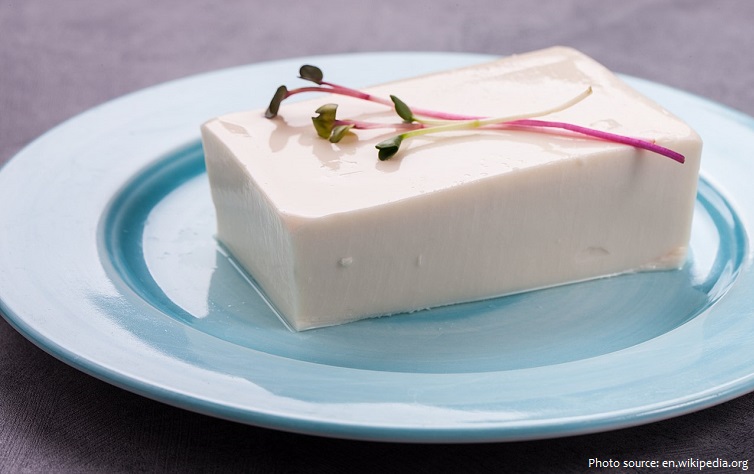
It spread to other parts of Southeast Asia as well. This probably coincided with the spread of Buddhism as it is an important source of protein in the vegetarian diet of East Asian Buddhism.
Li Shizhen, during the Ming Dynasty, described a method of making tofu in the Compendium of Materia Medica. Since then, tofu has become a staple in many countries, including Vietnam, Thailand, and Korea, with regional variations in production methods, texture, flavor, and usage.
The first tofu company in the United States was established in 1878.
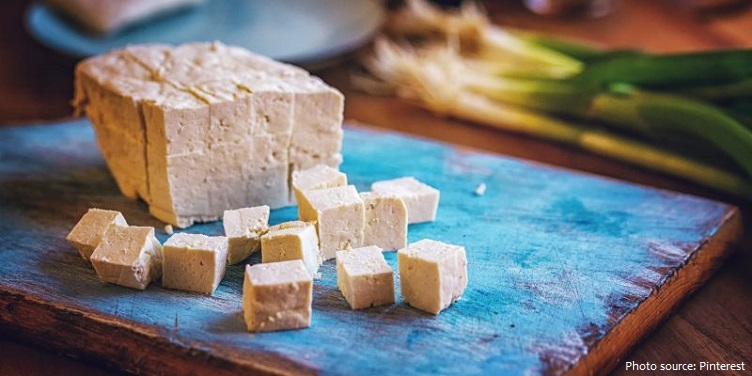
In 1908 Li Yuying, a Chinese anarchist and a vegetarian with a French degree in agriculture and biology, opened a soy factory, the Usine de la Caséo-Sojaïne. This was the world’s first soy dairy and the first factory in France to manufacture and sell beancurd. However, tofu was not well known to most Westerners before the middle of the 20th century. With increased cultural contact between the West and East Asia and growing interest in vegetarianism, knowledge of tofu has become widespread.
Numerous types of pre-flavored tofu can be found in supermarket chains throughout the West.
It is also used by many vegans and vegetarians as a source of protein.
The longest line of tofu is 1816.86 m (5,960.8 ft) long and was achieved by Shenmu Traditional Dietary Culture Research Association (China) in Yulin, Shaanxi, China, on 22 August 2020.
The largest piece of bean curd weighed 3,120 kg (6,878 lb) and was made by Jiange County Government at Jiangmenguan, Sichuan, China on 28 September 2003. The giant bean curd measured 2.2 m (7 ft 2 in) long, 1.2 m (4 ft) wide and 0.9 m (3 ft) high, and was fed to approximately 20,000 people.
